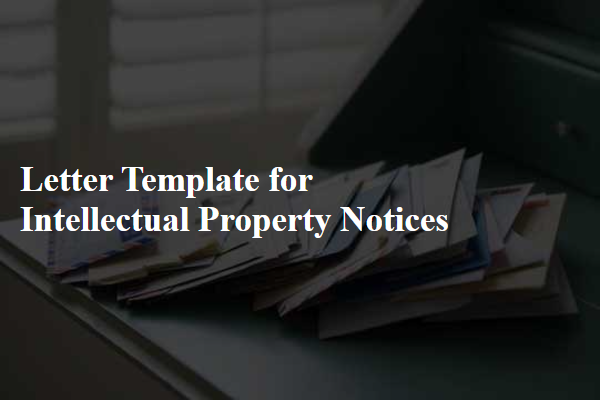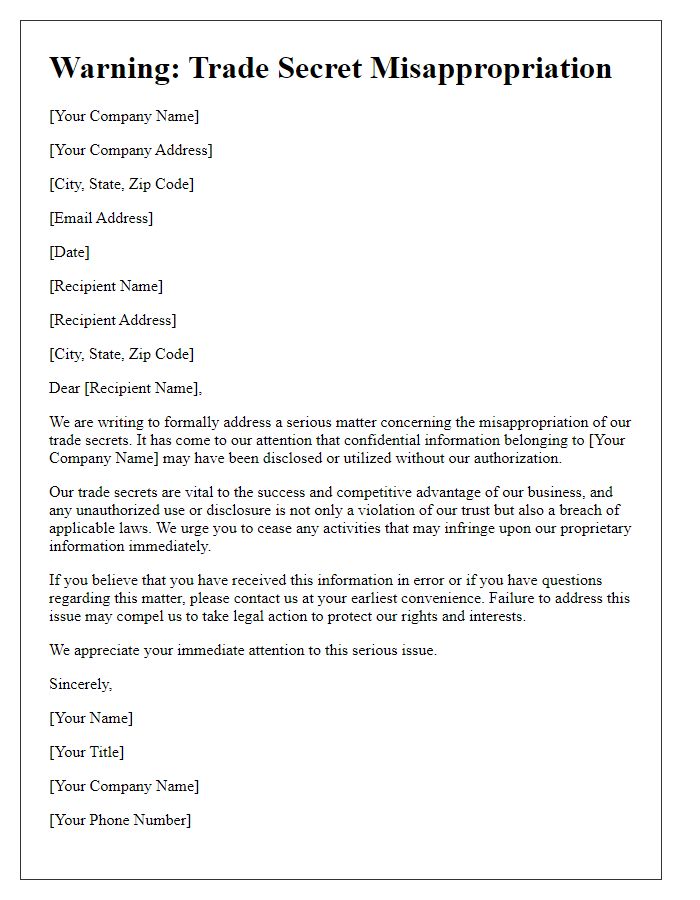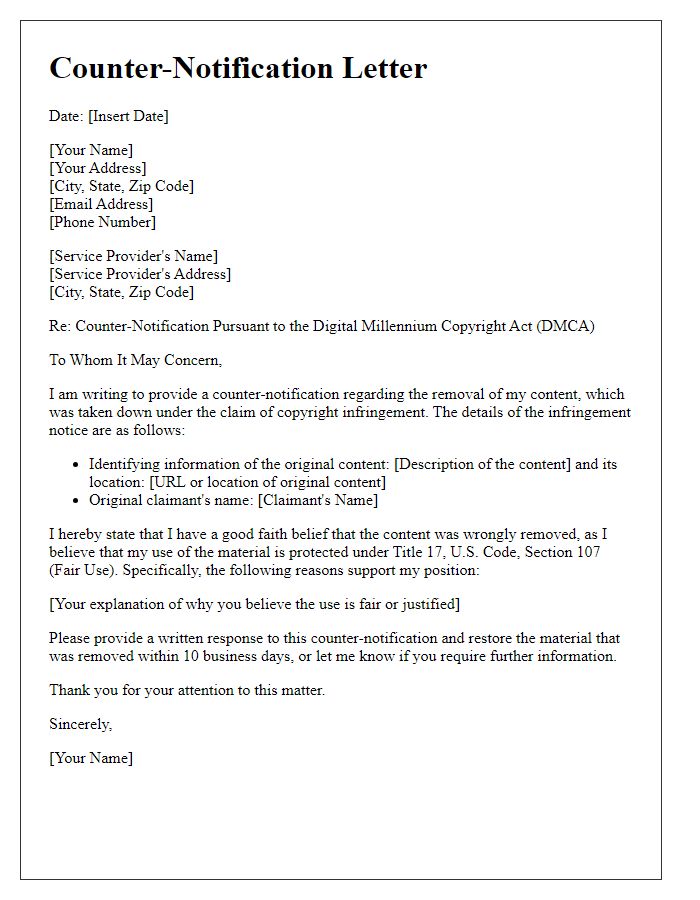Are you looking to protect your creative ideas and inventions? Writing a clear and effective intellectual property notice can be crucial in safeguarding your work from unauthorized use. In this article, we'll explore the key components of an effective letter template for intellectual property notices, making the process straightforward and accessible. Dive in to discover how to draft your own notice and ensure your intellectual property remains secure!

Accurate Identification of the Intellectual Property
Accurate identification of intellectual property (IP) is crucial in IP rights protection and enforcement, especially for businesses and creators. The term "intellectual property" encompasses various assets, such as copyrights, trademarks, patents, and trade secrets, which represent the innovative ideas and creative expressions of individuals and organizations. In 2022 alone, the global IP market was valued at approximately $7.8 trillion, highlighting its significance. For instance, trademarks like Apple's distinctive logo or Nike's "Swoosh" brand distinguish products in the marketplace. Accurate documentation, including registration dates and identifiers like patent numbers or copyright registration details, aids in establishing ownership and rights. Legal jurisdictions, such as the United States Patent and Trademark Office (USPTO) or the European Intellectual Property Office (EUIPO), provide mechanisms for robust protection, ensuring that IP creators receive recognition and financial benefits from their work. Effective management of IP enhances competitive advantage, stimulates innovation, and fosters economic growth in various sectors including technology, entertainment, and pharmaceuticals.
Specific Claim or Infringement Description
Intellectual property infringement can severely impact brand integrity and market position, particularly in creative industries such as publishing or digital art. A specific claim regarding trademark infringement involves unauthorized use of an established brand symbol or logo. For example, a notable case in 2021 highlighted the misuse of a popular corporate logo by a competing market entity in the fashion sector, leading to legal action in the United States District Court. The plaintiff, a well-known apparel brand, cited "confusion among consumers" as a detrimental effect on their reputation and sales figures, advocating for statutory damages that could reach up to $2 million under federal trademark law. In such instances, a detailed infringement description becomes crucial for legal recourse, providing evidence such as URLs, images, and timestamps.
Legal Basis and Jurisdiction Reference
Intellectual property notices play a critical role in protecting creations and inventions across various sectors. The legal basis for these notices typically stems from the statutes governing intellectual property, such as the Copyright Act of 1976 in the United States or the Patent Act of 1952. Jurisdiction reference often pertains to specific courts or administrative bodies that oversee intellectual property disputes, including the United States Patent and Trademark Office (USPTO) or the World Intellectual Property Organization (WIPO). Effective notices must outline the nature of the intellectual property, detail ownership, and specify any relevant legal precedents, thereby ensuring compliance and deterring unauthorized use. Enforcement mechanisms may involve cease-and-desist letters or litigation procedures, asserting the rights of the creator or owner in a clear jurisdictional framework.
Request for Remedy or Cessation
Intellectual property notices serve as formal communications regarding the infringement or unauthorized use of protected works. This typically occurs in industries such as technology, music, film, and literature. The notice outlines the specific intellectual property concerned, such as patents, copyrights, trademarks, or trade secrets, identifying the infringing party and the nature of the infringement. The document requests a remedy, which might involve cessation of the infringing activities, restitution for damages, or a public acknowledgment of the owner's rights. Effective notices often reference relevant laws, such as the Copyright Act or the Lanham Act in the United States, providing clarity on the legal framework supporting the claims. Such communications are essential for protecting the rights of creators and maintaining the integrity of intellectual property systems, particularly in highly competitive markets like Silicon Valley or Hollywood, which are known for their vibrant ecosystems of innovation and creativity.
Contact Information for Response and Further Communication
Intellectual property notices require clear communication and designated contact information for effective response. An email address (e.g., ip@companyname.com) ensures swift communication regarding any infringement concerns. A dedicated phone number (e.g., +1-800-555-0199) allows for immediate discussion of issues, providing a direct line to an intellectual property attorney specializing in patent and copyright law. Additionally, a physical mailing address (e.g., 123 Corporate Lane, Suite 456, Cityville, ST 12345) may be necessary for formal documentation. Response timelines should be outlined to facilitate understanding and urgency in addressing legal matters.













Comments